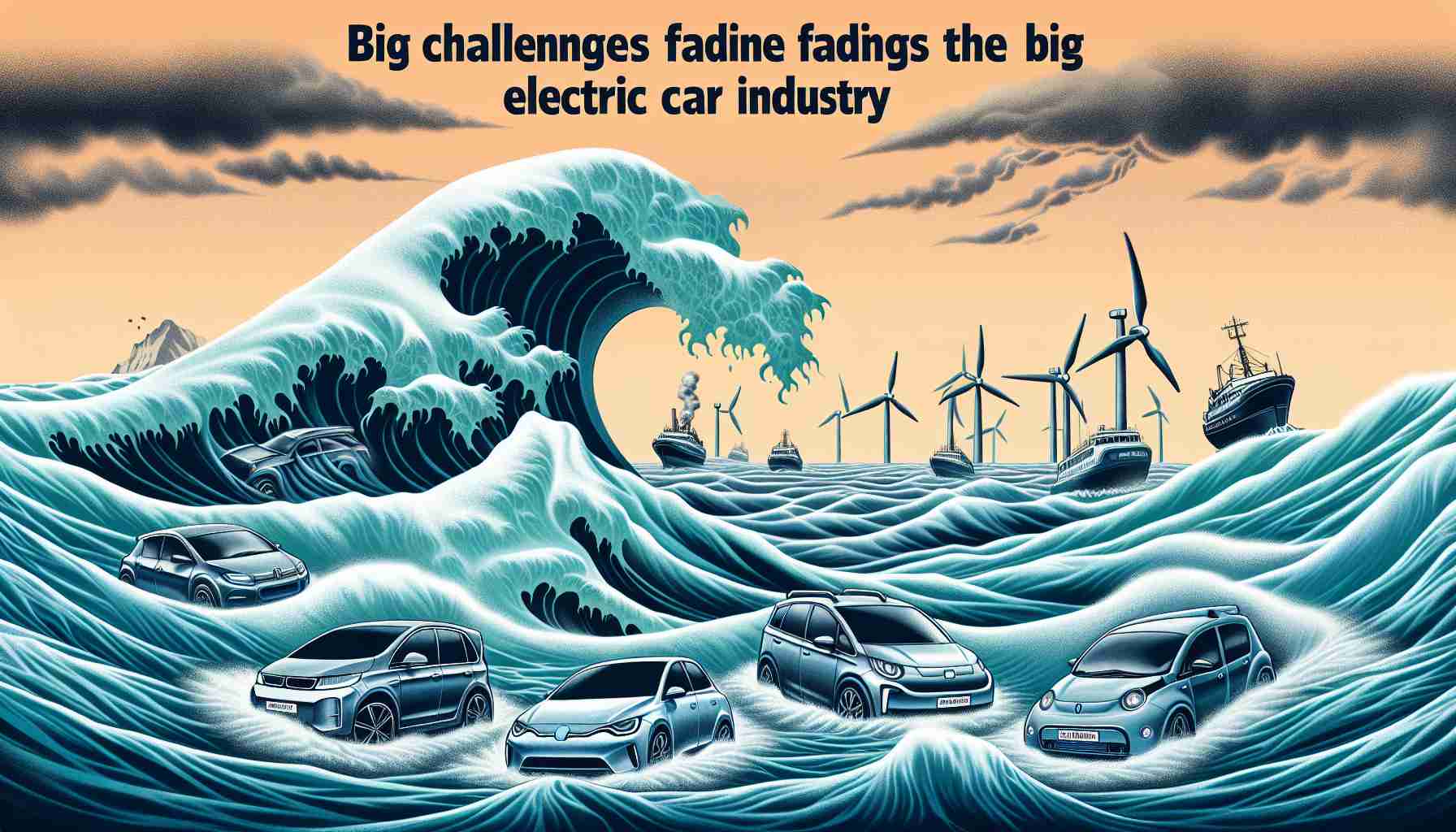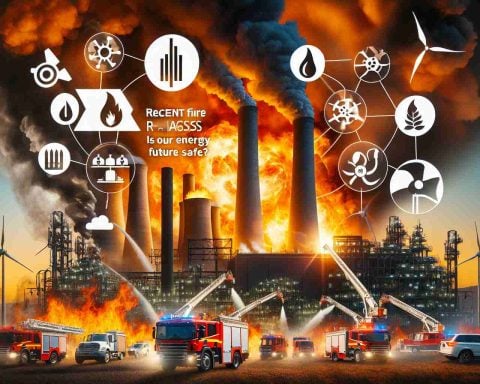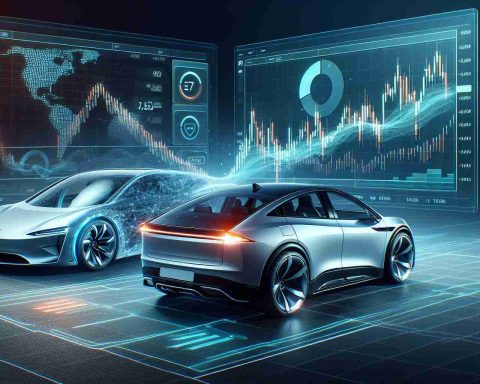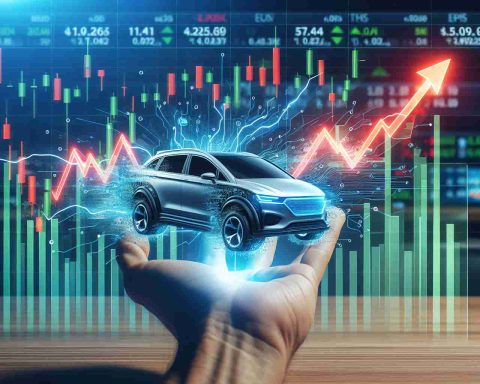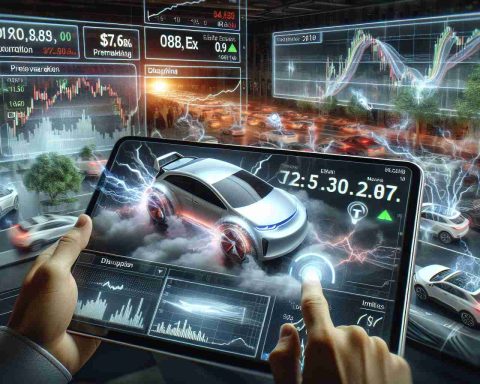As electric vehicle (EV) manufacturers brace for impact, a recent executive order from US President Donald Trump has sent shockwaves through the industry. In a decisive move, Trump’s administration targeted electric vehicles, jeopardizing the climate-centered initiatives set forth by the previous administration.
The executive order, titled “Unleashing American Energy,” aims to create a competitive environment for traditional gasoline vehicles while halting federal investments in new EV charging infrastructures. The implications are significant; plans to potentially eliminate tax incentives for EV purchasers and revoke California’s ability to enforce stricter automobile regulations were brought to light.
Following this announcement, shares of notable EV companies, including Rivian and Tesla, plunged sharply, reflecting investor concerns. Analysts predict that the future of the EV sector may hinge on the outcomes of expected legal challenges against these policy changes, as numerous regulations were designed to promote sustainable vehicle options.
While Trump’s administration positions these changes as beneficial to American energy independence, experts warn that they may disproportionately favor oil companies and undermine environmental progress. The Alliance for Automotive Innovation has also voiced its desire for coherent national standards while expressing reservations about California’s unilateral regulations.
Despite this turmoil, the demand for electric cars continues to rise, suggesting that while the road ahead may be fraught with challenges, the electric vehicle revolution is far from over.
Electric Vehicles and Their Broader Implications
The recent executive order targeting electric vehicles (EVs) reflects a pivotal juncture not only for the automotive industry but also for society at large. As the U.S. strives for energy independence, such policies can contribute to a renewed reliance on fossil fuels, undermining decades of progress toward cleaner energy solutions. With the auto industry pivoting to meet consumer demand for sustainable options, these regulations may confuse consumers, potentially stifling the cultural shift towards green technology.
Moreover, the global economy may face ripple effects from fluctuating investments in EV technology. Countries like China and Germany are robustly investing in EV infrastructures, aiming to dominate the burgeoning market. If the U.S. retracts its climate initiatives, it risks losing its competitive edge on the world stage, which could lead to reduced innovation and economic growth in green technology sectors.
The environmental implications of this shift are also severe. Halting the expansion of EV infrastructure directly impacts carbon emissions reduction goals, jeopardizing international climate commitments. As experts warn of the consequences of climate change, undermining the transition to electric vehicles could exacerbate ecological degradation in the long term.
Trends indicate that while traditional automotive practices may receive temporary reprieve, consumer preference is evolving. The electric vehicle revolution, fueled by a global push for sustainability, is likely to continue, highlighting a fundamental tension between policy and public sentiment on environmental issues.
Electric Vehicle Future: Navigating Through Regulatory Challenges and Market Dynamics
The State of Electric Vehicles: Current Trends and Innovations
As the electric vehicle (EV) landscape faces a new set of regulatory challenges, manufacturers and consumers alike are adjusting to a rapidly evolving environment. The recent executive order from the Trump administration, titled “Unleashing American Energy,” has directed significant scrutiny toward the EV sector, sparking discussions about its implications for the future.
Market Analysis: Demand vs. Regulation
Despite the administrative shifts, the demand for electric vehicles remains robust. In fact, global EV sales have shown remarkable growth, projected to rise significantly by 2025. According to the International Energy Agency (IEA), electric vehicle sales reached a record high in 2021, and this trend is anticipated to continue, driven by increasing consumer awareness and advances in battery technology.
Pros and Cons of Current EV Policies
# Pros:
– Increased Competition: The push for traditional gasoline vehicles could lead to a more competitive environment for manufacturers.
– Greater Focus on Energy Independence: The current administration’s policy may align with national interests related to energy production.
# Cons:
– Potential Decline in EV Adoption: Risk of reduced federal support could discourage new buyers and lead to slower growth in the sector.
– Environmental Concerns: Many experts argue that favoring gasoline vehicles undermines efforts to combat climate change.
Features and Specifications of Leading Electric Vehicles
Leading EV manufacturers such as Tesla, Rivian, and others continue to innovate with advanced features including:
– Longer Battery Ranges: New lithium-ion battery technologies are allowing vehicles to travel further on a single charge, with some models exceeding 400 miles.
– Enhanced Charging Infrastructure: Despite federal setbacks, many companies are investing in their own charging stations to ensure consumer accessibility.
– Autonomous Driving Technologies: Advancements in AI and machine learning are enabling more sophisticated autonomous features, increasing the appeal of electric vehicles.
Use Cases of Electric Vehicles
Electric vehicles have found widespread application in various sectors, including:
– Personal Transportation: Increasingly popular among consumers looking for sustainable and cost-effective options.
– Commercial Fleets: Many companies are transitioning their delivery and service vehicles to electric models to reduce operational costs and improve sustainability credentials.
– Public Transportation: Cities are adopting electric buses to meet emissions reduction targets and enhance public transit infrastructure.
Limitations of Current EV Developments
While the outlook for electric vehicles seems optimistic, several limitations exist:
– Infrastructure Challenges: The lack of widespread and reliable charging stations remains a barrier to wider EV adoption.
– Range Anxiety: Many potential buyers are still concerned about the driving range of electric vehicles compared to traditional vehicles.
– Cost Concerns: Although prices are gradually decreasing, many EVs still have higher upfront costs compared to their gasoline counterparts.
Predictions for the Future of Electric Vehicles
Market analysts predict that the EV market will continue to expand, driven by a mix of consumer demand, technological advancements, and impending regulatory changes. The electric vehicle sector is expected to see:
– Increased Government Incentives: Future administrations may reinstate or introduce new incentives to promote EV sales.
– Technological Breakthroughs: Ongoing research is likely to yield more efficient batteries and charging solutions.
– Sustainability Initiatives: Companies will increasingly embrace sustainability in their operations, from sourcing materials to energy-efficient manufacturing processes.
Conclusion: The Road Ahead
While the regulatory landscape for electric vehicles may currently present challenges, the underlying demand for sustainable transportation continues to gain momentum. EV manufacturers will need to navigate these headwinds with innovative solutions and strategies while advocating for policies that support a greener future.
For additional insights on the electric vehicle market and trends, visit Energy.gov.

